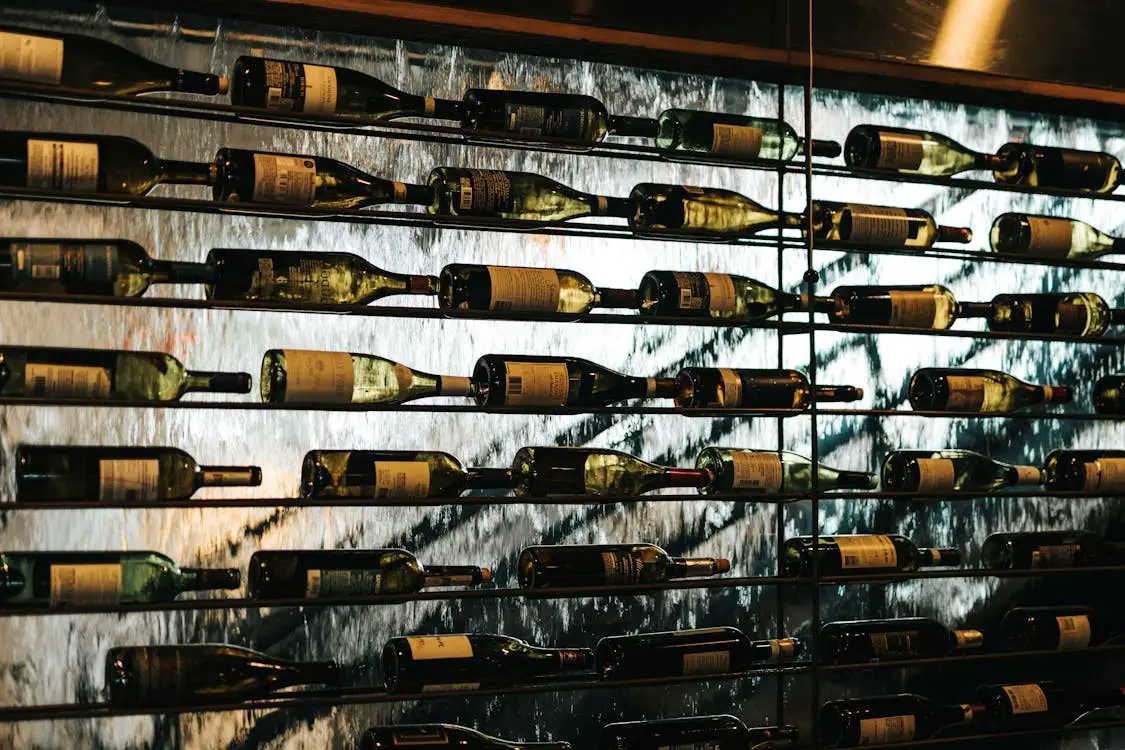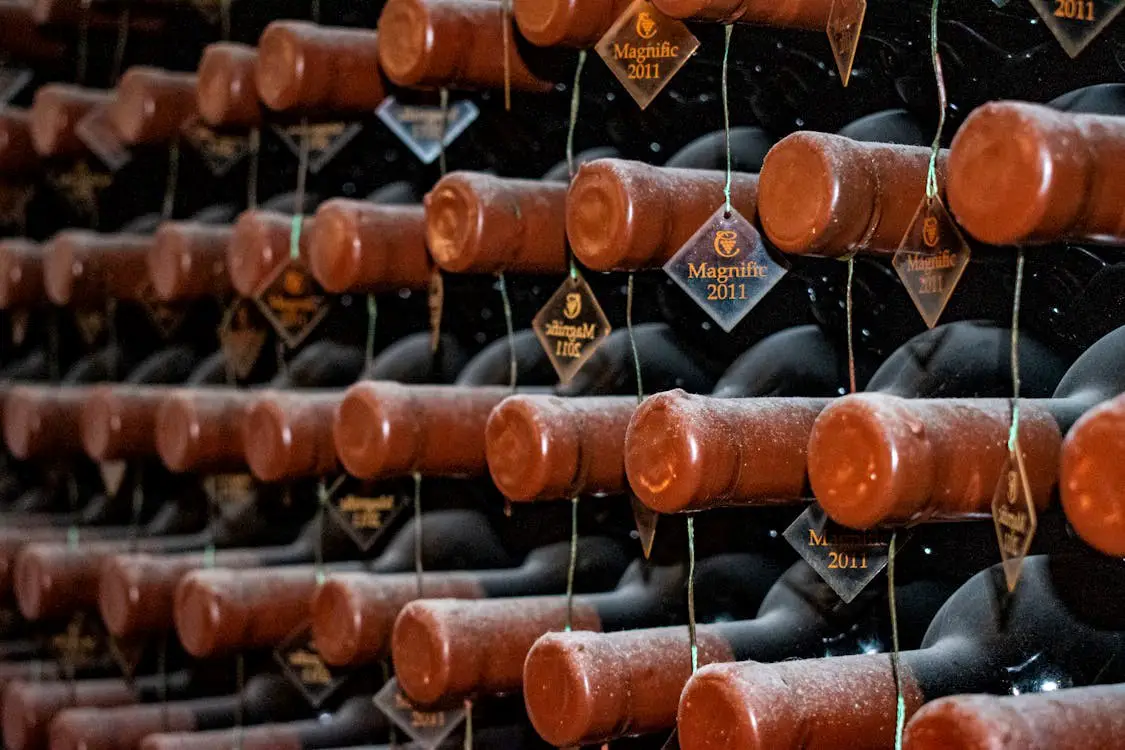Built-in vs Freestanding Wine Fridges

Here’s a summary of how to choose:
Built-in fridges are sleek and blend into your cabinetry, great for modern kitchens or smaller spaces. They’re quiet, efficient, and perfect if you want a compact, long-term solution.
Freestanding fridges are more flexible, hold more bottles, and can make a statement in any room. They’re great if your collection is growing or you like showcasing your wine.
Think about how much wine you’ll store, your space, and whether you want it to move with you. For big collections, go freestanding; for a polished look, built-in is the way to go.
Here’s a more detailed breakdown of each with pros and cons:
| Aspect | Built-in | Freestanding |
|---|---|---|
| Design | Blends into cabinetry | Bold and eye-catching |
| Placement | Fixed, compact spaces | Flexible, works in any room |
| Capacity | 18–50 bottles | Up to 150+ bottles |
| Temperature Control | Precise, ideal for long-term storage | Good for short- or medium-term storage |
| Noise | Quiet and efficient | Louder; premium models are quieter |
| Mobility | Permanent installation | Portable and adaptable |
| Best For | Polished, modern kitchens | Growing collections, flexible spaces |
Designing for Elegance and Functionality
Your space is a key factor in determining the right solution.
Integrated refrigeration blends seamlessly into cabinetry or beneath counters, offering a refined, custom aesthetic that enhances high-end interiors.
These options use front-venting technology, allowing for flush installation and ensuring a polished, uninterrupted appearance that harmonises with bespoke kitchen design (source).
Standalone appliances, however, cater to versatility. They can serve as functional statement pieces, showcasing your bottles and fitting flexibly into various spaces. Whether placed in a home bar, dining area, or even a conservatory, these units allow your collection to stand out in its own right.
• Expert Tip: For new builds or remodels, collaborate with your designer to incorporate integrated wine storage early in the planning process. Opt for custom panels that match your cabinetry or select sleek finishes like stainless steel for timeless appeal. With freestanding units, consider pairing them with modular racks or complementary furniture for a cohesive look.
Storage Capacity: It’s More Than a Number
Capacity isn’t just about how many bottles fit; it’s about optimising storage for your needs. Integrated fridges often have a compact form, holding 18 to 50 bottles, which makes them ideal for drink-ready selections or a focused collection of favourites.
Their streamlined design ensures they complement modern kitchens or small spaces without overpowering the room.
Larger inventories benefit from standalone units, which can hold upward of 150 bottles. These often feature adjustable racks that accommodate different shapes, from magnums to champagne bottles.
Many also include dual or multi-zone temperature settings, making them perfect for storing a mix of reds, whites, and sparkling wines simultaneously.
• Anecdote in Action: Imagine hosting a dinner party where your freestanding fridge keeps a crisp Sauvignon Blanc at 8°C, while your built-in option, installed near your dining area, holds a rich Bordeaux at 14°C. With the right setup, your storage solutions elevate both convenience and atmosphere.
• Expert Tip: Check the manufacturer’s specifications for practical capacity. Consider how well the unit accommodates irregular bottle shapes—like the wide base of Burgundy bottles—and ensure you don’t end up with wasted space or overcrowded racks. If you’re struggling to find one, the range on expertwinestorage.co.uk has enough details on the product specifications to make an informed decision (they have helpful customer service, too).
Precision Storage: Temperature, Humidity, and Longevity
Wine is sensitive to its environment, and the right conditions can enhance its complexity over time. Built-in units are engineered for precision.
They offer stable temperature control and humidity regulation, critical for long-term storage (source).
Maintaining the correct humidity prevents corks from drying out, which is essential for preserving airtight seals and preventing oxidation.
Standalone designs are often better suited for short- to medium-term storage, although premium models with advanced climate control rival their integrated counterparts. Many feature UV-resistant glass doors, ensuring light-sensitive wines remain protected (source) while still allowing you to display your collection attractively.
• Practical Insight: Wines designed for ageing, like Barolos or vintage Ports, require stable conditions. Built-in designs excel with features like vibration-dampening technology, ensuring bottles remain undisturbed. Freestanding units, particularly those placed near windows or warmer areas, benefit from UV-resistant coatings and proper placement to avoid temperature fluctuations.
• Pro Tip: Use a hygrometer to monitor humidity levels, aiming for a range of 50–70%. For collectors focusing on long-term ageing, ensure your unit includes a carbon filter to maintain air purity and prevent musty odours (source).
Enhancing Your Entertaining Experience
Wine storage is not merely functional; it’s an integral part of the entertainment experience.
Integrated solutions, positioned near dining areas or kitchen islands, offer immediate access to perfectly chilled bottles, allowing you to serve with style. These options blend discreetly into the background while quietly enhancing your hosting capabilities.
Freestanding units make more of a statement, often featuring bold designs and lighting that draw attention to your collection. They’re ideal for creating a focal point in a lounge or bar area, sparking conversation and showcasing your taste.
• Anecdote in Action: At a recent gathering, a host stationed a freestanding cooler near their patio. Guests admired the illuminated display, selecting their preferred varietals as the evening flowed seamlessly from casual mingling to a formal dinner. Meanwhile, an integrated fridge near the kitchen served as a staging area for chilled dessert wines, ensuring flawless timing and presentation.
• Hosting Insight: For frequent entertainers, dual-zone models with quick-chill functionality are indispensable (source). Unexpected guests? Pop a bottle in the quick-chill compartment without disturbing the rest of your carefully maintained inventory.
Noise and Energy Efficiency: Critical Considerations
A noisy appliance can disrupt the tranquillity of a well-planned evening. Built-in models often operate more quietly, thanks to their enclosed installation and advanced compressor technology.
Many also come with energy-efficient features, reducing both operational costs and environmental impact.
Freestanding options may produce slightly more noise due to their open placement, but premium units mitigate this with sound-dampening technology. Thermoelectric models, while often smaller in capacity, eliminate vibrations and offer near-silent operation, making them ideal for living spaces.
• Practical Tip: Place freestanding units in less acoustically sensitive areas, such as a corner of your lounge or near a bar. Built-in fridges, on the other hand, perform best when cabinetry design allows for proper ventilation, ensuring the compressor doesn’t overwork and generate excess noise.
Maintenance and Longevity: Protecting Your Investment
Proper upkeep ensures your appliance serves your collection for years to come. Integrated units, with their enclosed placement, are naturally shielded from external dust and dirt, requiring minimal maintenance. However, it’s crucial to regularly check seals, filters, and ventilation to ensure optimal performance (source).
Freestanding designs demand a bit more attention due to their exposure. Regularly clean external surfaces, inspect vents for blockages, and ensure the unit is level to avoid unnecessary strain on the compressor.
• Expert Advice: Schedule a seasonal deep clean for all wine storage. Use a soft cloth and mild cleaning solution for the interior, avoiding harsh chemicals. Pay special attention to areas prone to condensation or frost build-up to maintain consistent conditions.
Futureproofing Your Collection
As your collection evolves, so will your storage needs. Integrated fridges are a long-term commitment, requiring careful foresight to avoid outgrowing their capacity too quickly. They’re ideal for those with a clear vision of their collection’s scope and a stable living arrangement.
Freestanding solutions, on the other hand, offer unmatched flexibility. They can move with you, adapt to changing layouts, or complement additional storage as your collection expands.
• Pro Tip: If you’re just starting out, begin with a versatile standalone unit. As your collection grows and your preferences solidify, consider upgrading to a built-in model tailored to your needs and space. For serious collectors, pairing both types allows for maximum versatility and capacity management.
Invest with Confidence
Selecting the right storage solution is about more than practicality; it’s a reflection of your passion and the value you place on the wines you cherish. Whether you’re drawn to the sleek integration of built-in designs or the bold presence of a freestanding unit, the choice should align with your lifestyle, collection goals, and the moments you want to create.
Your collection deserves to be stored, showcased, and celebrated with care. The right choice will not only protect your investment but also elevate your wine experience in every sense.

















